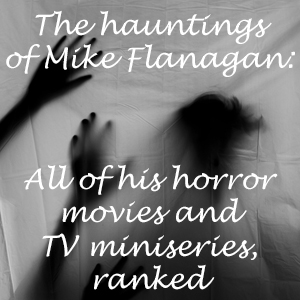In appropriate fashion for the horror genre, Mike Flanagan slowly crept onto the scene in the 2010s, making increasingly good, modestly budgeted films. Then he grabbed further attention via his specialty: streaming TV miniseries. The writer-director is rightly known for scaring viewers while never losing sight of the characters’ emotional traumas.
Flanagan’s knack for having viewers reach for the Kleenex is comparable in horror circles to Stephen King at his best – and appropriately, Flanagan has adapted two King novels for the screen. Indeed, despite making enough original projects to avoid a “gun for hire” label, Flanagan has vibrantly updated classic literature from Shirley Jackson, Henry James and Christopher Pike. Next up is Edgar Allan Poe, in his latest Netflix series, “The Fall of the House of Usher.”
As we await the next fall treat from Flanagan, let’s look back on his first 11 films/TV miniseries. My rankings are from worst to first. (Note: This post is revised and updated from a Nov. 3, 2018 post.)
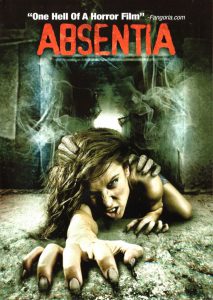
11. “Absentia” (2011, movie)
Flanagan’s calling card is a low-budget, Kickstarter-funded film shot with video cameras and starring B-to-D-level actors. A viewer has to look past that to notice the solid script that could’ve been reworked into one of those great “X-Files” horror episodes, with Mulder on hand to explain the pseudo-science.
Despite the low budget, there is a creepiness to the centerpiece location, a tunnel that allows joggers and cyclists to cross under a highway. People keep disappearing in the neighborhood, including Tricia’s (Courtney Bell) husband, who has been gone for seven years and therefore has legally “died in absentia.” This film is begging for a remake wherein the tension between the sisters (Katie Parker, as Callie, is the strongest actor here) can get punched up to a level worthy of the script.

10. “Oculus” (2013, movie)
A remake of Flanagan’s short film from 2006, “Oculus’ ” big draw is the actors: It has early turns by Karen Gillan (“Jumanji: Welcome to the Jungle” and Nebula in the Marvel Cinematic Universe) and Annalise Basso as the younger version of Gillan’s Kaylie. The premise is satisfying, as Kaylie – rather than giving up or going crazy – decides to prove the existence of supernatural evil with rigid experimentation and defenses.
She surrounds the mystical mirror that she knows possessed and killed her parents with cameras, thermometers and alarm clocks to make sure she and her brother, Tim (Brenton Thwaites), don’t get tricked by it. But of course the mirror isn’t going down without a fight. Unfortunately, the final act is a confusing romp that eschews linear time and, as far as I can tell, makes no logical sense.

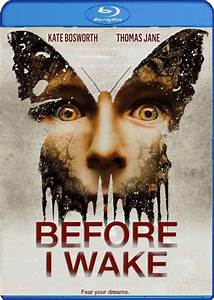
9. “Before I Wake” (2016, movie)
This meditation on the grief of losing a young child might draw in people who are starting a family, but it might feel slow and overlong for others. The child actors and dad (Thomas Jane) are great, but mom Kate Bosworth is the main character, and she’s a bit bland. This is the latest riff on “The Tempest,” as young Cody’s (Jacob Tremblay) nightmares become reality.
But it’s not pure horror: Cody’s pleasant dreams are also manifested, and Flanagan uses modern CGI to good effect for pretty scenes of butterflies. It boasts some decent jump scares, but “Before I Wake” is borderline as a fright film. A viewer’s enjoyment will depend on their patience with the slow pace and their connection to Cody.
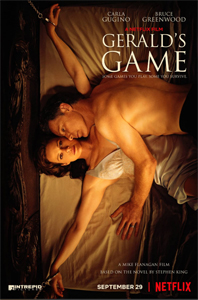
8. “Gerald’s Game” (2017, movie)
The premise is so simple it’s almost a turnoff: Jessie (Carla Gugino) is stuck handcuffed to a bed when her husband Gerald (Bruce Greenwood) has a fatal heart attack during their sex game. So she has to figure out how to get free, or she will die. When Jessie escapes into her memories, it could be a reprieve, but — this being an adaptation of a 1992 King novel — it’s another type of horror.
The most memorable flashback is an event between 12-year-old Jessie (“Cruel Summer’s” Chiara Aurelia) and her dad (“E.T.’s” Henry Thomas). She notes that what her father did to her in the bedroom has haunted her, even though he never touched her – and then we see a sequence that lives up to that promise. “Gerald’s Game” then uses our expectations against us in a surprising twist. Ultimately – while it’s unavoidably slow and internalized – Flanagan adapts this unadaptable book as well as can be done.

7. “The Haunting of Bly Manor” (2020, nine episodes, Netflix)
In this adaptation of Henry James’ “Turning of the Screw” (1898) and other works from his catalog, a young British girl says everything at the titular manor is “perfectly splendid.” At its best, so is this series, driven by an emotional turn by Victoria Pedretti as Dani. The American au pair is haunted (literally and figuratively) by the end of her marriage to a man, as she struggles with her homosexuality in a midcentury time when such a thing isn’t allowed by society.
The Dani-centered episodes are standouts, as is a moody side trip further into the past featuring guest star Kate Siegel (Flanagan’s IRL wife). When it clicks, “Bly Manor” is as good as the No. 1 show on this list. But it’s not consistently at that level, partly because it juggles more themes than it can keep in the air. Along with exploring Dani’s search for identity, the show ruminates on dementia. And Flanagan tries to slide from ghost-story to love-story, but he somewhat left me in the dust. The ending is twisty, but in too-confusing fashion. (Full review.)
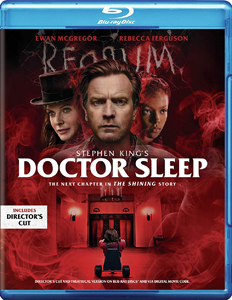
6. “Doctor Sleep” (2019, movie)
This adaptation of King’s 2013 “Shining” sequel starts with an off-screen achievement: The writer-director convinced King to let him make a narrative sequel to Stanley Kubrick’s “The Shining,” which the author famously hates. King granted permission because Flanagan sticks to the book’s thematic beats, namely Danny Torrance’s (Ewan McGregor) struggle to not turn out like his alcoholic dad (Jack Nicholson in the original).
“Doctor Sleep” juggles so many ideas that the one in its title – Danny’s ability to soothe dying people as they enter the great beyond – gets dropped. An “X-Men”-esque battle between people with mind-powers follows, featuring a chilling turn by Rebecca Ferguson as the casually nasty Rose the Hat. The finale sticks the landing thanks to a delicious “Shining” callback showcasing a reconstructed Overlook Hotel. The 3-hour director’s cut is the version you’ll want, as it plays like a (mini-) miniseries. While certainly overstuffed, “Doctor Sleep” won’t put you to sleep. (Full review.)
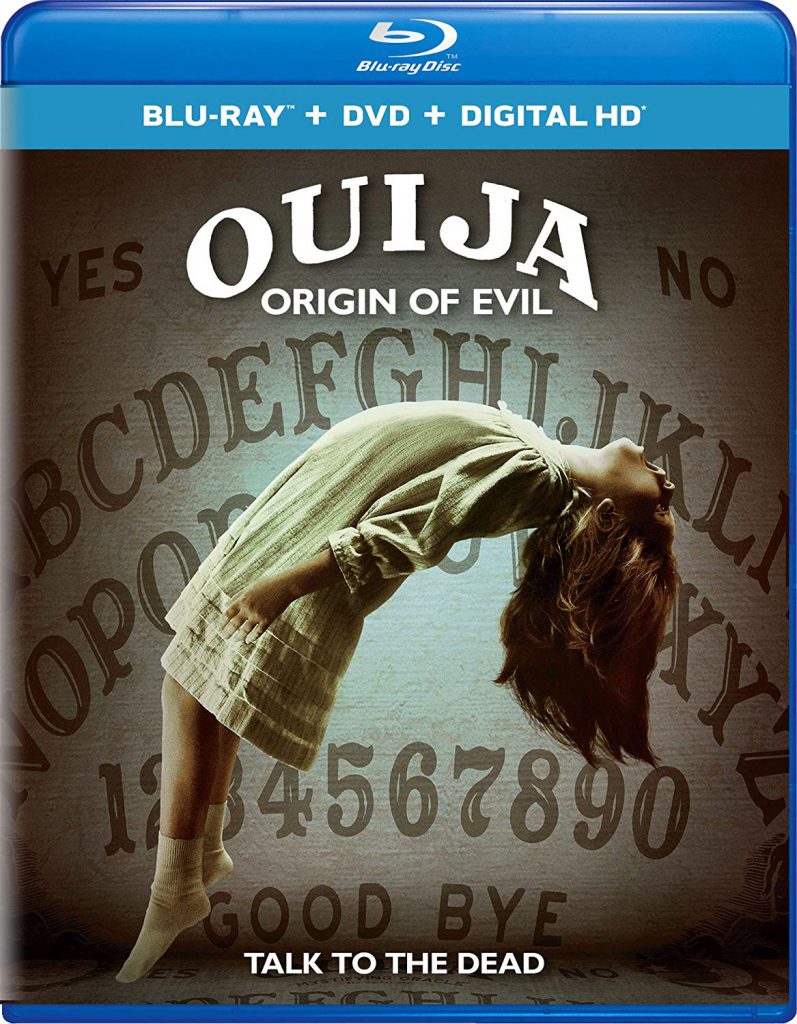
5. “Ouija: Origin of Evil” (2016, movie)
This feels like a conscious apology for 2014’s “Ouija,” the first Hasbro-approved movie based on the “supernatural” board game, following an insane amount of unofficial adaptations. Whereas that movie is rote and unengaging, “Origin of Evil” is the opposite, and since it’s a prequel, you don’t even have to watch the original.
Admittedly, this 1967-set film likewise doesn’t have a plot that stands out from the horror pack (people get possessed), but it is grounded by a nice story of a poor family trying to make ends meet. It has a creepy, secret room in the basement and achingly sympathetic characters that stand in sharp contrast to the throwaway teens from the first “Ouija.” The red-haired sisters are played by Basso and Lulu Wilson, and the mom is played by Elizabeth Reaser; all are Flanagan regulars, and we can see why.
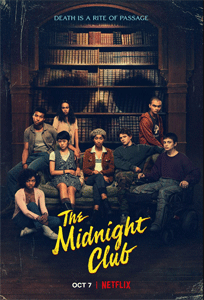
4. “The Midnight Club” (2022, 10 episodes, Netflix)
This riff on Pike’s 1990s young-adult horror books – deliciously set in that time, with the attendant music and fashions – was supposed to be an ongoing series. Ratings were too low for Netflix to keep it going (although they kept Flanagan around for the upcoming “House of Usher” miniseries). Luckily, “Midnight Club” is satisfying even in its truncated form, with the only major casualty being the mysterious nature of the housemistress played by horror icon Heather Langenkamp.
Just as “The Fault in Our Stars” had us thinking about romance even though the teens have terminal illnesses, here we think about spooky stuff in the (highly stylized, woodsy and comforting) hospice building, notably a creepy secret sub-basement. Iman Benson and Ruth Codd are particularly good among the dying teens, and I love the fireside storytelling. With each episode featuring a standalone tale by the hearth, “Midnight Club” can’t totally rely on the momentum of the overarching mystery – and for the most part, it doesn’t need to. (Full review.)
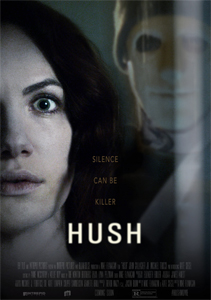
3. “Hush” (2016, movie)
Today, “straight-to-Netflix” is no knock, but not long ago, such films had to be defended with “Yeah, but trust me, it’s really good.” Such is the case with “Hush,” which proves Flanagan can tell a simple, small-cast story with panache. It follows deaf woman Maddie (Siegel, also the co-writer), who is alone at her house in the woods when it’s targeted by a masked home invader.
This (ironically) word-of-mouth streaming hit is structurally in the vein of other great home-invasion horror like “The Strangers” or the final act of “Halloween.” But it’s less outright terrifying and more of a gripping survival tale as Maddie overcomes her disability (she needs to be quiet, but of course can’t hear if she’s being quiet). She cleverly uses that very disability and her deaf-resident-equipped house to her advantage.
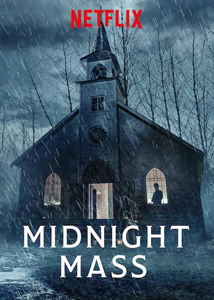
2. “Midnight Mass” (2020, seven episodes, Netflix)
Unlike Flanagan’s other miniseries, this is an original work – although it perhaps owes a little something to King. “Midnight Mass” consciously makes vampires scary again in an age of the comedic “What We Do in the Shadows,” much as “Salem’s Lot” did in the age of the soapy “Dark Shadows.” The legitimately terrifying ancient vampire could strike the barrier island’s residents at any time. This makes for a tense backdrop as Hamish Linklater’s oddly well-meaning priest attempts to draw residents to his fundamentalist church.
Meanwhile, excellent leads Zach Gilford and Siegel play out a religion-versus-atheism debate in a fascinating way: Riley is a theist-turned-atheist, and Erin is the opposite. In an unforgettable pair of monologs, they pontificate on why they hold their beliefs. In an example of masterful teleplay writing, they say the same thing; only superficialities of the language make their views distinct. Only a slight bit of illogic in the final episode keeps me from putting this at No. 1 on this list, but “Midnight Mass” was my favorite show of 2020. (Full review.)
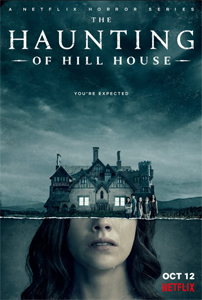
1. “The Haunting of Hill House” (2018, 10 episodes, Netflix)
The 1963 “The Haunting” is criticized by some for not showing enough ghosts, and the 1999 “The Haunting” is criticized by many for showing too many ghosts – and, ironically, not being scary. Flanagan comes up with a perfect compromise in this most robust adaptation of Jackson’s 1959 novel: The ghosts are there, but not out in the open. They hide in the background of various scenes! Whether we spot all of them or not, we are made subconsciously uneasy by those extras.
More overtly, episode nine includes the greatest jump scare of all time (with apologies to “Exorcist III”) as Flanagan reminds us that he can wield the standard horror tools when he wants to. Nonetheless, what sets “Hill House” apart from the genre pack – and what firmly put Flanagan on the map – is that we soak up the tragedies of the Crain family members’ lives. Particularly moving is the tale of Nell (Violet McGraw as a kid, Pedretti as an adult). Her childhood fear of the Bent-Neck Lady carries through her adult life and serves as a lump-in-your-throat metaphor for (or just plain portrayal of) mental illness. (Full review.)
Click here to visit our Horror Zone.
Main image by Nick Magwood from Pixabay.

